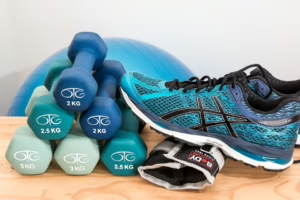Eating for Energy: The Ultimate Guide to Nutrient-Rich Foods
In today’s fast-paced world, the need for sustained energy levels has never been more critical. Whether you’re a busy professional, a student balancing studies and part-time work, or a parent juggling multiple responsibilities, what you eat can significantly impact your energy levels, mood, and overall well-being. This article will provide a comprehensive guide to nutrient-rich foods that enhance energy and detail how to incorporate them into your diet effectively.
Understanding Energy and Nutrition
The Science of Energy
Energy is derived from food in the form of macronutrients—carbohydrates, proteins, and fats. These macronutrients are broken down during digestion and absorbed into the bloodstream, where they are transported to cells to be used for various functions, including physical activity and brain function.
Macronutrients
-
Carbohydrates: The primary source of energy for the body, providing 4 calories per gram. They are classified into simple (sugars) and complex (starches and fibers) carbohydrates.
-
Proteins: Essential for tissue repair and growth, they also provide energy, yielding 4 calories per gram. They are made up of amino acids, some of which are essential and must be obtained through diet.
- Fats: Offering 9 calories per gram, fats are crucial for hormonal balance and energy storage. They are categorized into saturated, unsaturated, and trans fats.
Micronutrients
Micronutrients, including vitamins and minerals, play a vital role in energy metabolism. For instance, B vitamins are essential for converting food into energy, while iron supports oxygen transport in the blood. A deficiency in these nutrients can lead to fatigue and decreased energy levels.
Nutrient-Rich Foods That Boost Energy
1. Whole Grains
Whole grains, such as oats, quinoa, brown rice, and whole wheat, are packed with complex carbohydrates, fiber, and essential nutrients. They provide a steady release of glucose into the bloodstream, fostering sustained energy levels.
Benefits:
- High in fiber, which aids digestion and helps maintain stable blood sugar levels.
- Contains B vitamins necessary for energy metabolism.
2. Leafy Greens
Vegetables like spinach, kale, and Swiss chard are rich in vitamins A, C, K, and several B vitamins, along with iron and magnesium. They are low in calories and high in nutrients, making them an excellent choice for maintaining energy.
Benefits:
- High in antioxidants that reduce inflammation and fatigue.
- Support overall health with their vitamin and mineral content.
3. Lean Proteins
Foods such as chicken, turkey, fish, beans, and legumes are vital for muscle repair and energy production. They contain amino acids critical for the synthesis of hormones and neurotransmitters that regulate your energy levels.
Benefits:
- Maintaining muscle mass helps increase metabolic rate.
- Essential for keeping blood sugar levels stable.
4. Fruits
Fruits provide natural sugars, vitamins, minerals, and antioxidants, making them a perfect snack for quick energy boosts. Bananas, apples, berries, and oranges are great choices for on-the-go energy.
Benefits:
- High in fiber, they help regulate blood sugar levels.
- Rich in vitamin C and potassium, which are essential for energy production.
5. Nuts and Seeds
Almonds, walnuts, flaxseeds, and chia seeds are excellent sources of healthy fats, protein, and fiber. They offer a compact source of energy and are perfect for snacking.
Benefits:
- Rich in magnesium, which is critical for energy production.
- Contain omega-3 fatty acids that support brain health.
6. Dairy Products
Dairy contains a good balance of carbohydrates and protein, providing a quick source of energy. Yogurt, cheese, and milk are excellent options, especially when combined with fruits or whole grains.
Benefits:
- Provides calcium and vitamin D, critical for bone health and energy metabolism.
- Contains probiotics that may benefit gut health, indirectly affecting energy levels.
7. Lean Fats
Healthy fats from sources like avocados, olive oil, and fatty fish add flavor and energy to meals. While high in calories, fats are essential for absorbing fat-soluble vitamins.
Benefits:
- Provide sustained energy and satiety.
- Supports brain function and hormonal balance.
Meal Planning for Optimal Energy
Creating Balanced Meals
To maintain consistent energy levels throughout the day, aim to combine macronutrients in your meals. A balanced plate should include:
- Carbohydrates: ½ of your plate should be filled with whole grains and non-starchy vegetables.
- Proteins: About ¼ of your plate should be lean proteins.
- Healthy Fats: The remaining ¼ should include healthy fats.
Sample Meal Ideas
-
Breakfast:
- Oatmeal topped with berries and nuts, paired with Greek yogurt.
- Scrambled eggs with spinach and whole-grain toast.
-
Lunch:
- Quinoa salad with black beans, corn, diced avocado, and a squeeze of lime.
- Grilled chicken wrap with mixed greens and hummus.
-
Dinner:
- Baked salmon with brown rice and steamed broccoli.
- Lentil soup with whole-grain bread and a side salad.
- Snacks:
- Apple slices with almond butter.
- Carrot sticks and hummus.
The Role of Hydration
Dehydration can significantly drain your energy levels. Maintaining adequate fluid intake is essential for optimal bodily functions, including energy production.
Tips for Staying Hydrated
- Drink Water: Aim for at least 8-10 cups of water daily, adjusting for activity level and climate.
- Include Hydrating Foods: Consume fruits and vegetables with high water content, such as cucumbers, oranges, and watermelon.
- Limit Caffeine and Sugary Drinks: While they may provide a quick energy burst, they can lead to crashes later.
Common Myths About Energy Foods
Myth 1: All Carbs Are Bad
Carbohydrates are vital for energy; the key is choosing the right type. Focus on whole grains and fiber-rich foods rather than refined carbs.
Myth 2: Skipping Meals Increases Energy
Skipping meals can lead to energy crashes and overeating later. Regular meals and snacks help sustain energy levels.
Myth 3: High-Protein Diets Are Best for Energy
While protein is essential, an appropriately balanced diet containing carbohydrates, fats, and proteins is crucial for optimal energy levels.
Listening to Your Body
Everyone’s energy needs are different, and it’s essential to be attuned to your body. Pay attention to how different foods affect your energy levels and make adjustments accordingly. Keeping a food journal can help identify patterns and the best foods for your energy needs.
Conclusion
Eating for energy involves making informed choices about nutrient-rich foods that provide sustained energy throughout the day. By focusing on a balanced diet rich in whole grains, fruits, vegetables, lean proteins, and healthy fats, you can optimize your energy levels while supporting your overall health. Remember to hydrate and listen to your body’s cues for maximum benefits. Whether you’re gearing up for a big meeting, studying for exams, or chasing after kids, the right nutrition can make all the difference.
References
- Food Energy and Metabolism: An Overview
- The Role of Macros in Energy Production
- Nutrient Density: What It Is and Why It Matters
- The Impact of Hydration on Energy Levels
- Nutrition Myths: What’s the Truth?
(Note: Actual references should be added to replace the placeholders).


























Add Comment